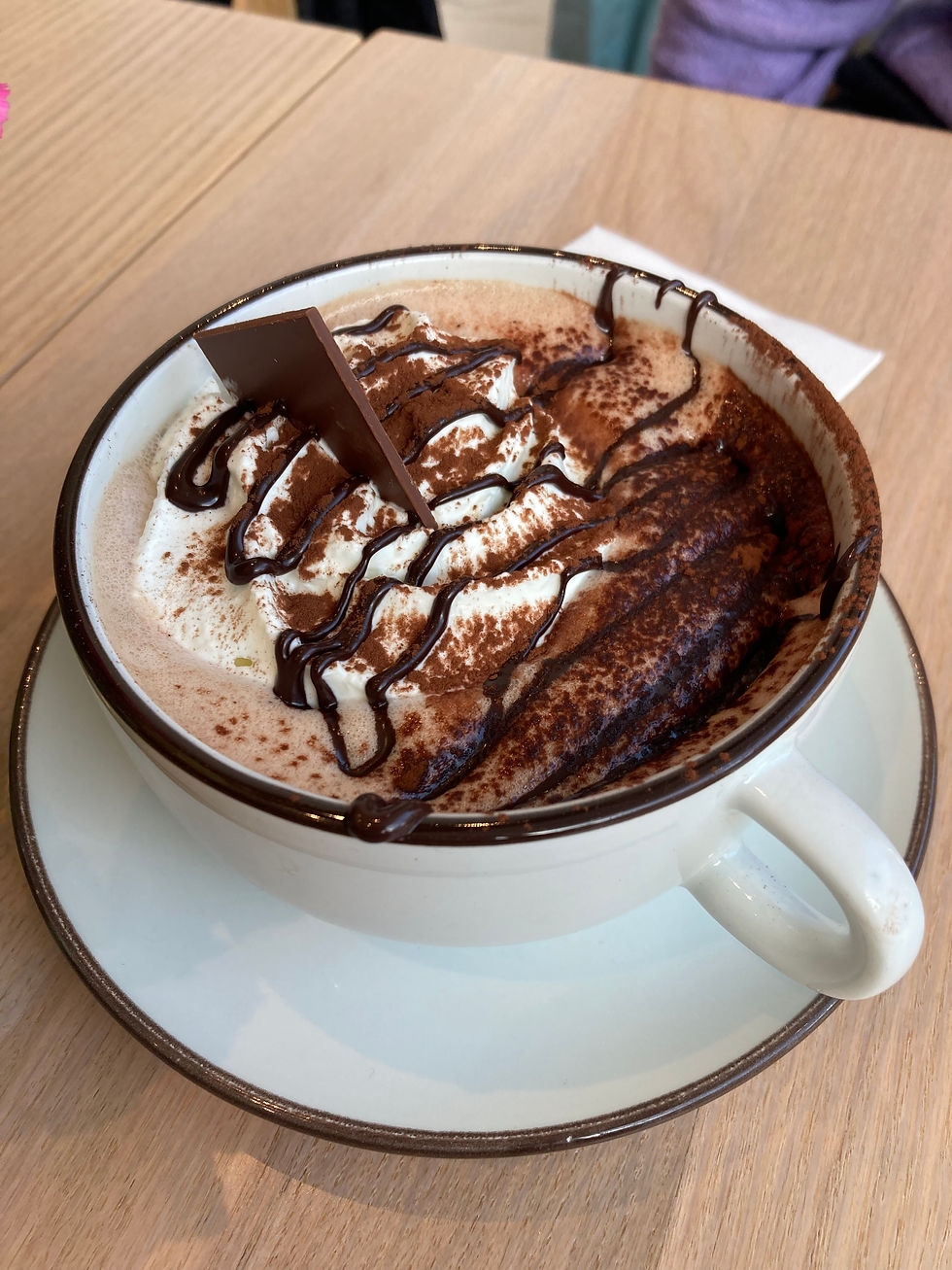Tasting My Favorite Swiss Chocolates:A Sweet Travel Adventure
- aliwebb37
- Oct 13
- 4 min read

I arrived in Zürich with a dream: I wanted to test my long-held belief that Swiss chocolate is simply “the best.” I wanted to stand where the beans are roasted, where recipes are guarded, where rivers of tempered chocolate flow in dramatic fashion.
That’s how I found myself in Kilchberg, a town on the west shore of Lake Zürich, at the Lindt Home of Chocolate—part museum, part factory-temple, and an entirely mouth-watering experience.
Exploring the Lindt Home of Chocolate

The atrium of the Lindt Museum introduced itself with a dramatic installation. Suspended in white light and clean lines stood a nine-meter-tall fountain, a huge whisk poised over a sculptural Lindor, pouring a continuous bronze ribbon of chocolate down its gleaming arc.
The fountain circulates about 1,400 liters of chocolate through internal piping into a huge pool. As a result, the wafting smell of chocolate pervades the whole museum.
Lindt’s exhibition traces the origins of Mesoamerican cacao to modern Swiss invention, featuring Daniel Peter, the Vevey chocolatier who developed milk chocolate in the 1870s with the assistance of his neighbor, Henri Nestlé.

The museum’s timeline makes that leap, where science and sugar combine into a wonderful alchemy that is offered in a free tasting at the conclusion of your visit. We also stopped at the café to sample the hot chocolate, which did not disappoint with inches of whipped cream over liquid chocolate.
The Lindt Museum is only one possible stop on the Swiss chocolate trail. A couple of hours by train from Zürich is Broc and the Maison Cailler. Cailler’s exhibit takes you deep into chocolate history—François-Louis Cailler’s 19th-century leap into chocolate craft and the 1898 opening of the Broc factory. Callier is the favorite of my American friends who now live in Geneva.
Halba
Another chapter in the Swiss chocolate book is Halba, made exclusively in Switzerland.
Owned by the Coop Group, their factory operations (now centered in Pratteln) are animated by a clear promise: sustainability from bean to bar. Halba highlights Fairtrade sourcing, projects with farmer cooperatives in Ghana and Ecuador, and promotes sustainable production choices at home—for example, renewable energy and reduced packaging. This approach makes “Swiss chocolate” mean as much for the people who grow the cocoa as it does for those who eat it.
Toblerone
Of course, no chocolate pilgrimage is complete without Toblerone—the triangular bar that turned its odd shape into an identity.
This was my nostalgic favorite, as it was the first Swiss chocolate I ever tasted. First produced in Bern in 1908 by Theodor Tobler, Toblerone combined honey, almond nougat, and milk chocolate into a recipe that remains unchanged to this day. Its shape is supposed to echo the Matterhorn. Toblerone’s story is about a shape and a recipe that made Swiss chocolate instantly recognizable in airports and corner shops worldwide.
Frey
If Toblerone represents Swiss identity on the world stage, Frey represents Swiss loyalty at home. Founded in Aarau in 1887 and now owned by Migros, the country’s largest retailer, Chocolat Frey is the chocolate most often found in Swiss pantries. Its headquarters features interactive exhibits and views of production lines, capped by generous tastings.

The Ultimate Blind Chocolate Taste Test
Back home in the United States, I wanted to know if the rapture of Swiss chocolate was simply a result of travel fever. So, I staged a blind taste test.
The panel was eclectic: six people, aged six to ninety-two, each a self-declared chocolate lover. I laid out unmarked squares from Lindt, Cailler, Halba, Toblerone, and Frey.
The youngest panelist quickly chose Toblerone as his favorite, not for its smoothness, but for the crunch of the nougat, and his brothers soon followed. His father admitted it was the only Swiss chocolate in their house.
The ninety-two-year-old, who had lived through chocolate rationing in WWII, picked Lindt. Others spread out among the other brands. When the wrappers were revealed, a clear theme emerged. The panel confirmed Toblerone as the group’s favorite, but not by much. While Toblerone was once my favorite, I now prefer the smoothness of Lindt.
Sweet Conclusions: A Cocoa-Themed Itinerary for Travelers
If you’re building a cocoa-themed itinerary, you could happily orbit Zürich and Lake Geneva for several days.
Start in Kilchberg for Lindt, then head to Broc for Cailler. Detour to Bern for Toblerone’s birthplace and then to Aarau for Frey’s family-friendly factory. Don’t forget Zürich’s new bean-to-bar artisans, whose small-batch ethos signals where the craft is heading next. So much chocolate, so little time.
But whether tasted in a Swiss museum, on a train picnic, or in a suburban American kitchen during a blind test, the verdict is the same: Switzerland has turned chocolate into something more than food. It is history, heritage, and innovation that you can eat.
Switzerland tasted like chocolate long before I arrived, and I’ll remain a huge fan if I can pull off a wrapper and sink my taste buds into any Swiss-made chocolate.




Comments